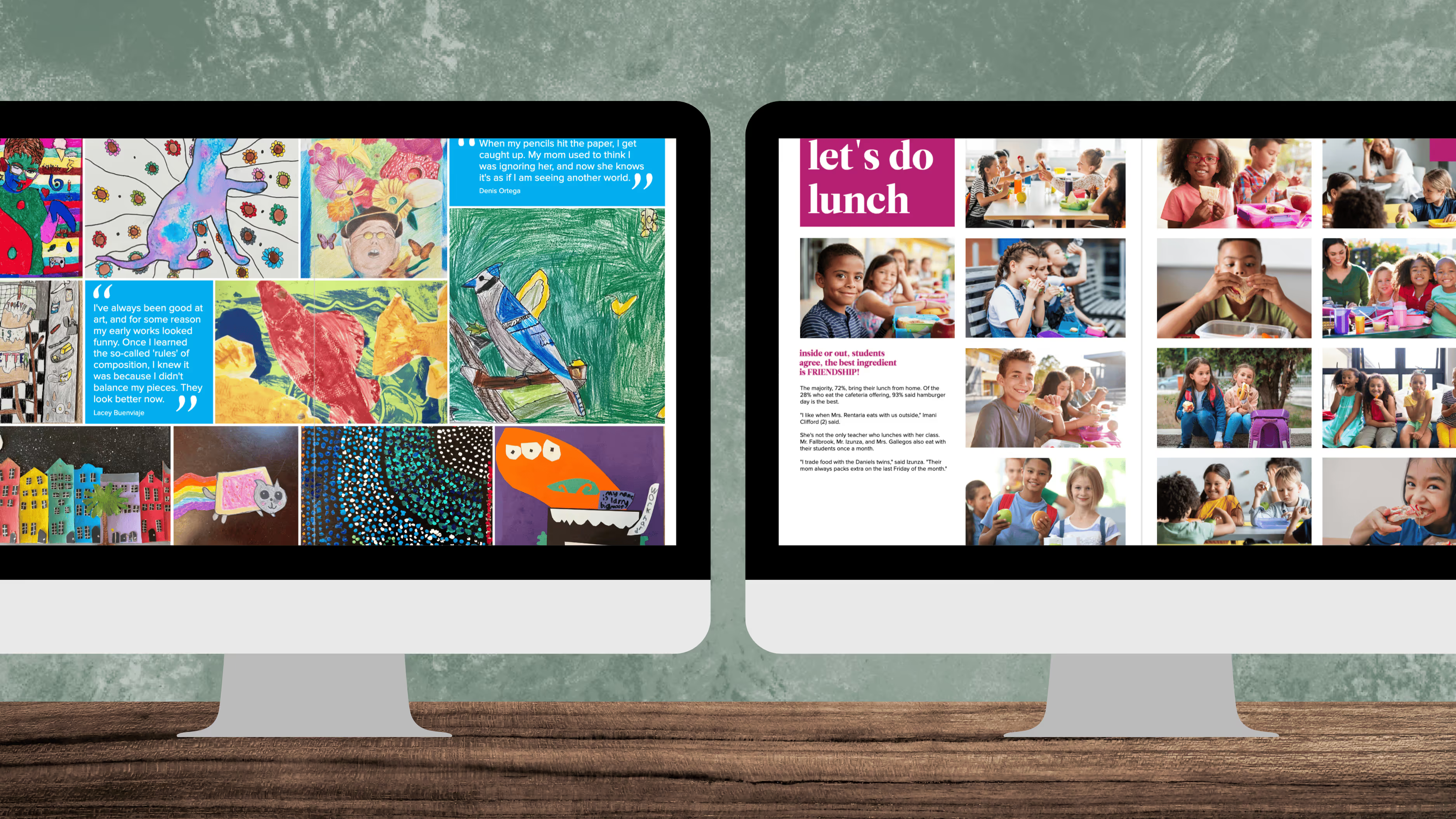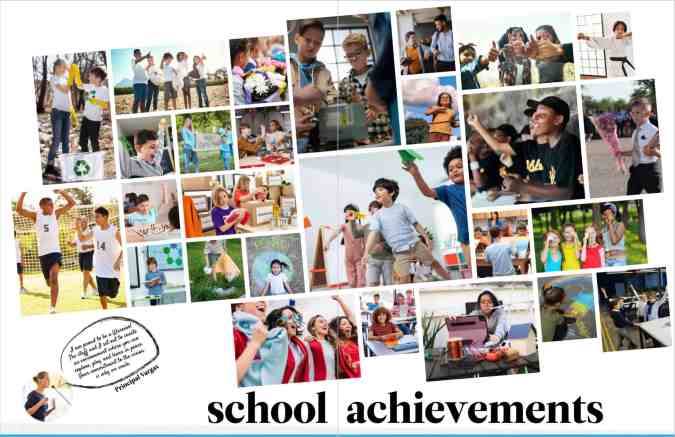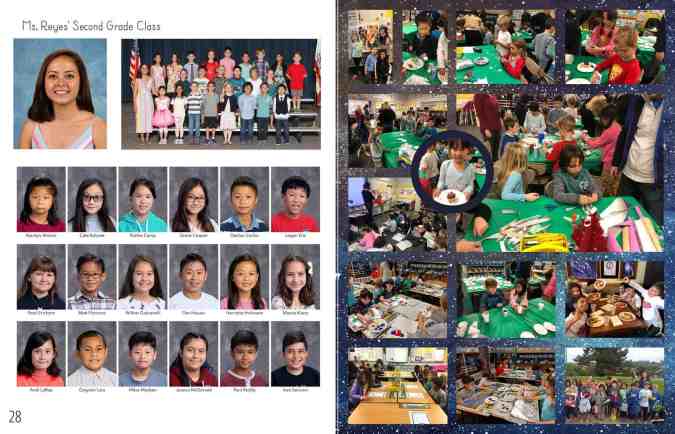
Erikalinpayne
June 25, 2024
2
Min Read Time

Photo collages get a bad rap. Poorly designed spreads without uniform spacing or an overarching theme are little more than a photo dump. (I actually think that’s how my MIL would describe what I do as a yearbook mom. “She just puts pictures on pages.”) Executed well, they become standout spreads.
Answering a question with a question: is it even a collage if it has fewer than 15 photos? Too few can make the page look sparse, while too many can make it cluttered and overwhelming.
A good range for a collage spread is roughly 20-30 photos. While you can find layouts with up to 65 photo boxes among Treering’s 1000s of pre-designed templates, more photos mean smaller photos. Smaller photos make it difficult to discern who is in the picture.
That’s the point of a collage: to increase coverage of events and individuals.

When our team looks at yearbooks, the standout books have collage pages for each class or grade and the major school events. While collage pages are a great way to include many photos, too many can become monotonous. Aim to limit collage pages to around 10-15% of the total page count of the yearbook. This keeps the content varied and engaging.

Pairing class photos with a collage of candids gives each class a spread of their own. It shows how each class is different. This is also an easy way to ensure each student is in the book more than once: their “official” photo and a fun photo.

A collage page makes it easy to cover all-school events such as the jogathon or an awards ceremony, where you end up with 100s of photographs. Other ideas include
Captions provide context for the photo. At a minimum, you should include ident captions. Below or beside the photos, add the students’ names and grades [e.g. Soren Ham (1) and Evangeline Romero (1)].

Middle and high school staffs should aim to add body copy in the form of a story to unite the spread.
Including collage pages in your yearbook is a popular way to add more photos and showcase the story of your school year.